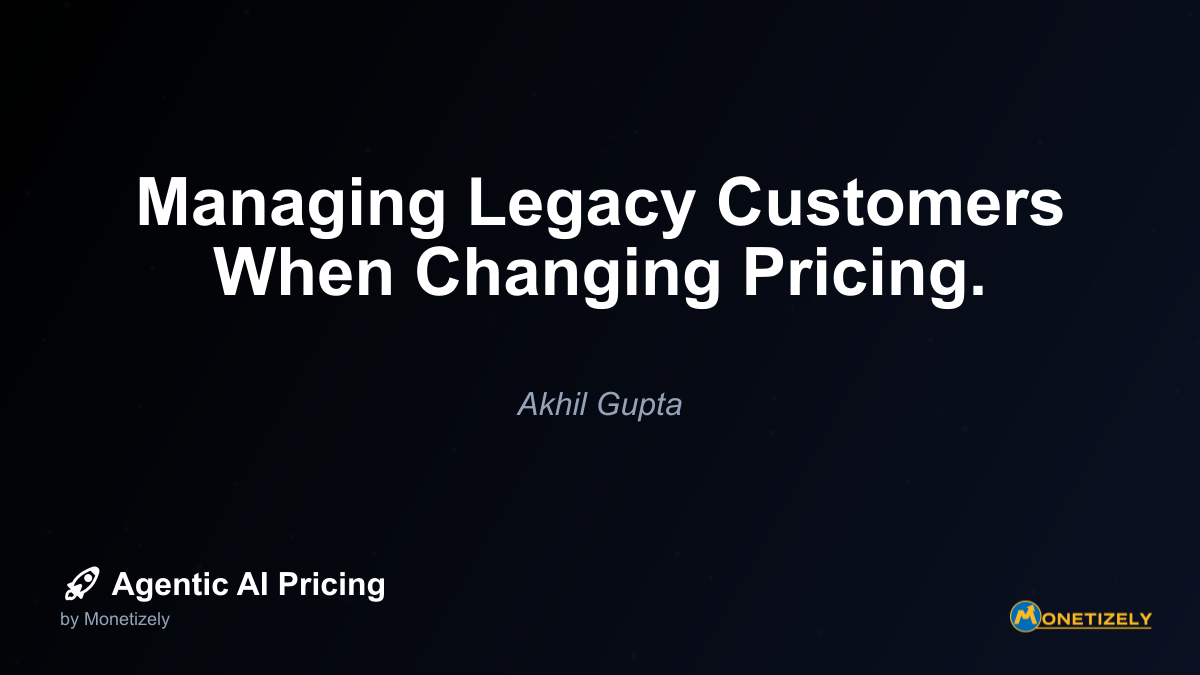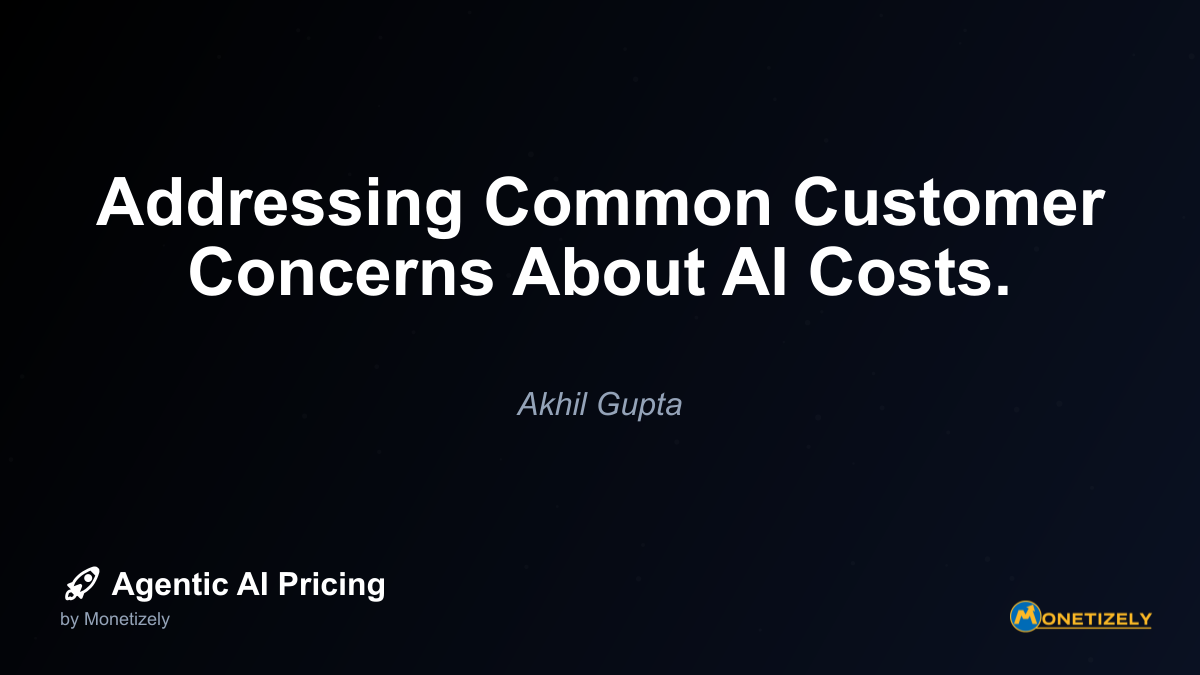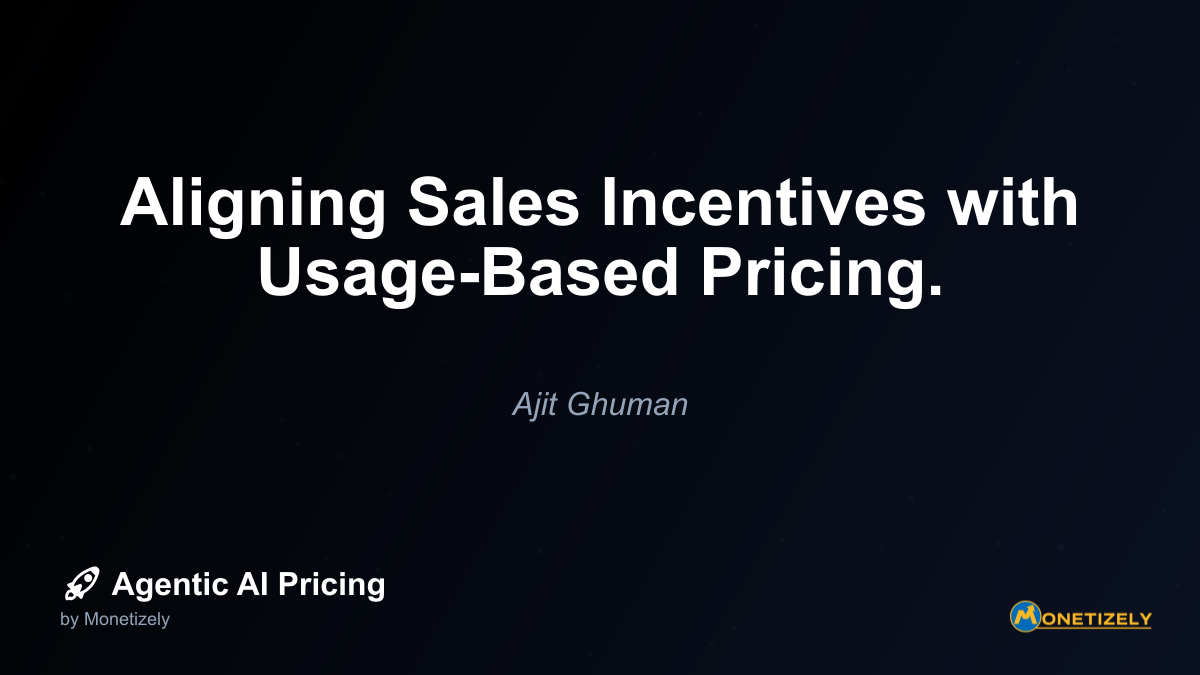· Akhil Gupta · Best Practices · 10 min read
Managing Legacy Customers When Changing Pricing.
AI and SaaS Pricing Masterclass
Learn the art of strategic pricing directly from industry experts. Our comprehensive course provides frameworks and methodologies for optimizing your pricing strategy in the evolving AI landscape. Earn a professional certification that can be imported directly to your LinkedIn profile.

Managing pricing changes is a delicate balancing act that requires careful consideration of your existing customer base. When implementing new pricing structures, organizations must navigate the complex terrain of maintaining customer loyalty while evolving their business model to remain competitive and profitable.
The Challenge of Legacy Customers in Pricing Transitions
For agentic AI companies and SaaS businesses alike, your existing customer base represents both your most valuable asset and potentially your most significant obstacle when updating pricing strategies. These customers signed up under specific terms and conditions, often with certain price expectations, and have built their own business processes and budgets around your current pricing model.
Research shows that existing customers are 50% more likely to try new products and spend 31% more compared to new customers. This makes them incredibly valuable to retain during pricing transitions. However, they’re also 60-70% more likely to convert on offers than new prospects, making them particularly sensitive to perceived negative changes in their relationship with your company.
When updating pricing models to better align with evolving market conditions, technological advancements, or shifting business strategies, the approach taken with legacy customers can make the difference between a successful transition and a costly customer exodus.
Why Companies Need to Update Pricing Models
Before diving into strategies for managing legacy customers, it’s important to understand why pricing changes become necessary in the first place, particularly in the rapidly evolving agentic AI space:
Value Realization: As AI capabilities expand and demonstrate greater business value, pricing models need to reflect this increased value delivery.
Cost Structure Changes: The underlying costs of developing, maintaining, and scaling AI systems evolve over time, necessitating pricing adjustments.
Market Positioning: Competitive landscapes shift, requiring strategic pricing realignments to maintain market position.
Business Model Evolution: As companies mature, they often need to transition from acquisition-focused pricing to retention and profitability-oriented models.
Feature Expansion: The addition of new capabilities, particularly in agentic AI systems, may warrant pricing restructuring to properly monetize enhanced offerings.
According to a recent study by Simon-Kucher & Partners, 72% of SaaS companies update their pricing at least once per year, with 38% doing so multiple times annually. For agentic AI companies, this frequency can be even higher due to the rapidly evolving nature of the technology and its applications.
Key Strategies for Managing Legacy Customers During Pricing Changes
1. Grandfathering: Preserving Legacy Pricing
Grandfathering is perhaps the most commonly employed strategy when updating pricing models. This approach allows existing customers to maintain their current pricing structure indefinitely or for a specified period, while new customers are onboarded at the updated rates.
Advantages of Grandfathering:
- Minimizes immediate customer disruption and potential churn
- Preserves trust and demonstrates loyalty to early adopters
- Avoids the need for difficult conversations about price increases
- Simplifies the transition process administratively
Disadvantages of Grandfathering:
- Creates a two-tier customer base with different pricing expectations
- May limit revenue growth from your most established customers
- Can become administratively complex over time as you manage multiple pricing structures
- May create perceived inequities if newer customers receive enhanced features at similar price points
Implementation Best Practices:
- Clearly communicate the value of being “grandfathered” to existing customers
- Document grandfathered terms thoroughly in your billing systems
- Establish clear policies regarding how account changes (upgrades, downgrades, etc.) impact grandfathered status
- Consider setting a time limit on grandfathered rates to avoid perpetual pricing disparities
For agentic AI companies, grandfathering can be particularly effective when transitioning from early-adopter pricing to mainstream market rates as the technology matures and demonstrates clearer ROI.
2. Phased Transitions: Gradual Migration to New Pricing
Rather than maintaining legacy pricing indefinitely, phased transitions involve gradually moving existing customers to new pricing structures over an extended period. This approach provides customers time to adjust budgets and expectations while allowing the company to eventually standardize pricing across its customer base.
Advantages of Phased Transitions:
- Reduces immediate financial impact on customers
- Provides time for customers to realize additional value before paying increased rates
- Allows for budget planning and adjustment on the customer side
- Eventually achieves pricing consistency across your customer base
Disadvantages of Phased Transitions:
- Extends the timeline for realizing full revenue potential from pricing changes
- Requires more complex communication and customer management
- May still result in some customer churn at each phase of the transition
- Necessitates more sophisticated billing systems to manage varying transition timelines
Implementation Best Practices:
- Create a clear, documented timeline for the transition process
- Segment customers based on their potential sensitivity to price changes
- Communicate each phase well in advance, emphasizing new value delivered
- Consider aligning price increases with feature enhancements or service improvements
- Offer optional early adoption incentives for customers willing to transition sooner
In the agentic AI space, phased transitions work particularly well when moving from usage-based to value-based pricing models as customers need time to understand and quantify the business impact of AI implementations.
3. Migration Incentives: Encouraging Voluntary Transitions
Migration incentives provide existing customers with compelling reasons to voluntarily adopt new pricing structures rather than remaining on legacy plans. These incentives can include enhanced features, additional services, or even temporary discounts on the new pricing.
Advantages of Migration Incentives:
- Transforms a potentially negative conversation into a positive opportunity
- Accelerates customer adoption of new pricing models
- Creates opportunities to expand customer engagement with your platform
- Allows customers to feel in control of their decision-making process
Disadvantages of Migration Incentives:
- May require significant investment in new features or temporary discounts
- Can create expectations for future incentives during subsequent pricing changes
- Risks undervaluing new offerings if discounts are too aggressive
- May not be effective with highly price-sensitive customers
Implementation Best Practices:
- Conduct customer research to identify the most compelling incentives
- Create time-limited offers to encourage prompt decision-making
- Clearly articulate the added value of new plans beyond the temporary incentives
- Develop ROI calculators or value demonstrations to support the transition
- Train customer success teams to effectively communicate the benefits of migration
For agentic AI providers, effective migration incentives might include access to new AI capabilities, enhanced customization options, or priority access to computing resources during peak demand periods.
4. Tiered Implementation: Segmenting Customers for Tailored Approaches
Rather than applying a single strategy across all legacy customers, tiered implementation involves segmenting your customer base and applying different approaches based on customer characteristics such as size, lifetime value, growth potential, or strategic importance.
Advantages of Tiered Implementation:
- Allows for customized approaches based on customer value and relationships
- Optimizes revenue potential while minimizing churn risk
- Enables more personalized communication and transition planning
- Allocates transition resources to the most valuable customer segments
Disadvantages of Tiered Implementation:
- Increases complexity in planning and execution
- Requires sophisticated customer segmentation capabilities
- May create perception issues if different customers compare approaches
- Demands more resources for customer management during transitions
Implementation Best Practices:
- Develop clear, objective criteria for customer segmentation
- Create standardized approaches for each tier rather than fully customized plans
- Train account managers on the rationale and implementation of the tiered approach
- Monitor customer satisfaction across tiers to identify potential issues
- Consider the lifetime value projection, not just current revenue, when segmenting
In the agentic AI industry, tiered implementation is particularly valuable when transitioning enterprise customers who may have deeply integrated your AI capabilities into critical business processes and require more customized transition support.
Communication Strategies for Pricing Changes
Regardless of which approach you choose for managing legacy customers during pricing transitions, communication is perhaps the most critical element in ensuring success. Poor communication can undermine even the most thoughtful pricing strategy.
1. Advance Notice and Transparency
Providing substantial advance notice of pricing changes demonstrates respect for your customers’ planning processes. For significant changes, consider the following timeframes:
- Small businesses: 3-6 months advance notice
- Mid-market companies: 6-9 months advance notice
- Enterprise customers: 9-12 months advance notice
Transparency about the reasons for the pricing change is equally important. Customers are more likely to accept changes when they understand the underlying factors necessitating them.
2. Value-Focused Messaging
Frame pricing communications around the value delivered rather than cost increases. This includes:
- Highlighting new or improved features included in updated pricing
- Quantifying the ROI or business impact of your solution
- Demonstrating how pricing aligns with value received
- Providing case studies or examples of outcomes achieved
3. Personalized Outreach for Key Accounts
For your highest-value customers, personalized communication is essential:
- Schedule one-on-one conversations with account executives
- Provide custom transition plans addressing specific customer concerns
- Offer executive-to-executive discussions for strategic accounts
- Create tailored ROI analyses demonstrating continued or enhanced value
4. Comprehensive Support Resources
Develop resources to support customers through the transition:
- FAQ documents addressing common questions and concerns
- Comparison charts showing old vs. new pricing structures
- Calculators to help customers understand the impact on their specific usage
- Webinars explaining the changes and addressing questions
- Dedicated support channels for pricing transition inquiries
Measuring Success in Pricing Transitions
To evaluate the effectiveness of your legacy customer management strategy during pricing changes, consider tracking these key metrics:
- Customer Retention Rate: Monitor churn specifically attributed to pricing changes
- Net Revenue Retention: Track whether existing customers are growing or contracting in revenue
- Customer Satisfaction Scores: Measure changes in NPS or CSAT before and after pricing transitions
- Migration Rate: For voluntary transitions, track the percentage of customers adopting new pricing
- Support Volume: Monitor increases in support tickets or inquiries related to pricing changes
- Expansion Revenue: Measure additional revenue from customers upgrading during transitions
- Customer Feedback Sentiment: Analyze qualitative feedback regarding pricing changes
Case Study: Successful Legacy Customer Management During Pricing Transition
Consider the example of an agentic AI company that successfully transitioned from a usage-based pricing model to a value-based approach:
The company had initially charged based on API calls and computing resources consumed. As their AI capabilities matured and demonstrated clear business value, they wanted to align pricing with outcomes rather than inputs. They implemented a tiered approach to legacy customer management:
Strategic Enterprise Accounts (15% of customers, 60% of revenue):
- Personalized transition plans with executive involvement
- 12-month phased implementation with quarterly increases
- Custom ROI analyses demonstrating enhanced value
- Additional service inclusions to offset perceived price increases
Growth Accounts (35% of customers, 30% of revenue):
- 9-month notice period with migration incentives
- Option to grandfather for 18 months or immediately transition with a 15% discount
- Enhanced feature access for early adopters
- Dedicated transition support team
Small/Startup Accounts (50% of customers, 10% of revenue):
- Permanent grandfathering for customers below certain usage thresholds
- Clear migration paths with self-service tools
- Community webinars explaining changes and benefits
- Simplified pricing calculator for self-assessment
The results were impressive: 92% customer retention through the transition, with 78% of customers voluntarily migrating to new pricing within 12 months. Net revenue retention increased by 23%, significantly outpacing the projected 15% increase from pricing changes alone, as customers expanded usage under the new model.
Common Pitfalls to Avoid
When managing legacy customers during pricing changes, be careful to avoid these common mistakes:
- Insufficient Notice: Surprising customers with pricing changes without adequate time to prepare
- Over-promising Grandfathering: Making indefinite promises that limit future flexibility
- Unclear Transition Paths: Failing to provide specific guidance on migration options
- Neglecting Customer Segmentation: Applying one-size-fits-all approaches to diverse customer bases
- Focusing on Cost Rather Than Value: Emphasizing price increases rather than value delivered
- Inadequate Systems Preparation: Failing to update billing systems to handle complex transitions
- Poor Internal Communication: Not adequately preparing customer-facing teams for questions
- Ignoring Feedback Loops: Failing to monitor and respond to customer concerns during transitions
Conclusion: Building a Customer-Centric Pricing Evolution Strategy
Successfully managing legacy customers during pricing changes requires a delicate balance between business needs and customer relationships. By employing strategies such as grandfathering, phased transitions, migration incentives, and tiered implementations, companies can evolve their pricing models while maintaining customer loyalty.
The most successful transitions share common elements: transparent communication, value-focused messaging, adequate notice, and personalized approaches for key accounts. By treating pricing changes as relationship opportunities rather than potential conflict points, companies can strengthen customer connections while evolving their business models.
For agentic AI companies in particular, pricing evolution is inevitable as the technology matures and demonstrates increasing value. Those who master the art of bringing their customers along on this journey will maintain competitive advantage while maximizing the lifetime value of their customer relationships.
Remember that pricing transitions are not merely financial exercises but critical moments in your customer relationships that, when handled well, can actually strengthen loyalty and set the stage for long-term growth and mutual success.
Co-Founder & COO
Akhil is an Engineering leader with over 16+ years of experience in building, managing and scaling web-scale, high throughput enterprise applications and teams. He has worked with and led technology teams at FabAlley, BuildSupply and Healthians. He is a graduate from Delhi College of Engineering and UC Berkeley certified CTO.
Pricing Strategy Audit
Let our experts analyze your current pricing strategy and identify opportunities for improvement. Our data-driven assessment will help you unlock untapped revenue potential and optimize your AI pricing approach.




